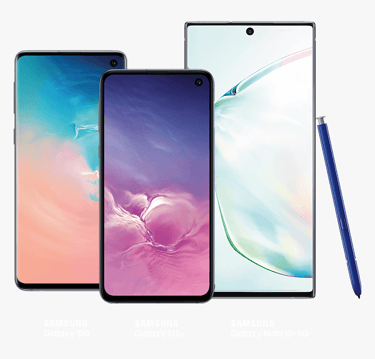Add your promotional text...
Samsung Galaxy S10 (2019) Review : In-Depth Analysis of Features, Performance, Camera, and Value for Money
The Samsung Galaxy S10 (2019) delivers a stunning Dynamic AMOLED display, robust performance, and versatile triple-camera setup. While it excels in design and features,its battery life may fall short for all-day usage, and the high price could be a barrier for some.
SAMSUNG
12/8/202420 min read
Introduction
The Samsung Galaxy S10 (2019) stands as a flagship device that blends cutting-edge technology with elegant design, offering a premium experience for users. Featuring a stunning 6.1-inch Dynamic AMOLED display, the S10 delivers vibrant colors, sharp contrasts, and deep blacks, making it ideal for everything from video streaming to gaming. Under the hood, it’s powered by the Exynos 9820 (or Snapdragon 855, depending on the region), ensuring smooth multitasking and fast performance. The device also boasts a versatile triple-camera setup, combining a 12MP wide, 12MP telephoto, and 16MP ultra-wide lens, enabling users to capture everything from close-ups to expansive landscapes with excellent clarity. The in-display ultrasonic fingerprint scanner adds an extra layer of security, while features like wireless charging and reverse wireless charging make it highly functional. However, despite these strengths, the S10’s 3,400 mAh battery may not hold up for power users throughout the day, and its premium price point can be prohibitive for those on a budget. Overall, the Galaxy S10 is a well-rounded device with impressive performance and features, but it does have a few drawbacks to consider.
This review delves into the intricacies of the Galaxy S10, examining its key specifications, performance metrics, market positioning, key competitors, strengths, weaknesses, price range and its influence on the mid-range smartphone segment, particularly as 5G technology begins to reshape the industry.


Samsung Galaxy S10 (2019) Review
In-Depth Analysis of Its Features, Performance, and Why It’s Still Relevant in 2024




Key Features
"Features, Specs, and Why It’s Still Relevant Today"
The Samsung Galaxy S10 (2019) is a flagship smartphone that offers a blend of cutting-edge technology, premium build quality, and advanced features, making it one of the top devices in the market. Below are some of the standout features of the Galaxy S10:
1. Dynamic AMOLED Display
The Galaxy S10 features a 6.1-inch Dynamic AMOLED display, which offers vibrant colors, deep blacks, and a sharp Quad HD+ resolution (3040 x 1440 pixels). This display ensures an immersive viewing experience for watching videos, playing games, and browsing, with HDR10+ support for richer, more detailed colors. The Infinity-O display design eliminates the notch and features a hole-punch for the front camera, providing an uninterrupted screen experience.
2. Versatile Triple-Camera System
The S10's triple-camera setup allows for flexible and high-quality photography:
12MP wide lens with a variable aperture (f/1.5-2.4), enabling stunning photos in both bright and low-light conditions.
12MP telephoto lens with 2x optical zoom, allowing you to get closer to subjects without losing image quality.
16MP ultra-wide lens (f/2.2) captures more of the scene, perfect for group photos or landscapes.
The rear cameras also support 4K video recording with advanced features like Super Steady video for smooth and stable footage. Additionally, the front camera offers a 10MP lens for sharp selfies and 4K video recording.
3. Flagship Performance
The Galaxy S10 is powered by either the Exynos 9820 (global version) or the Qualcomm Snapdragon 855 (US version) chipset, ensuring smooth and responsive performance. Paired with 8GB of RAM, it can easily handle multitasking, gaming, and demanding applications without lag. The phone runs One UI, Samsung’s intuitive skin over Android, which enhances usability with features like dark mode and customizable layouts.
4. All-Day Battery Life
With a 3,400mAh battery, the Galaxy S10 offers solid battery life that should last a full day with moderate usage. It also supports 15W fast charging, allowing you to quickly top up your device when needed. For those who prefer wireless charging, the S10 offers 15W wireless charging and even features Wireless PowerShare, allowing you to wirelessly charge other devices like Galaxy Buds or a friend’s phone.
5. In-Display Ultrasonic Fingerprint Sensor
The Galaxy S10 features an ultrasonic in-display fingerprint sensor, which is not only faster but more secure than traditional optical sensors. This technology uses sound waves to create a 3D map of your fingerprint, providing a higher level of security while unlocking your phone.
6. Premium Build Quality
The Galaxy S10 features a glass front and back with an aluminum frame, creating a sleek and premium look. The device is also IP68-rated, meaning it's resistant to both dust and water, making it durable enough for everyday use, including brief submersion in water up to 1.5 meters.
7. Stereo Speakers by AKG
The S10 offers stereo speakers tuned by AKG, delivering rich and balanced sound with Dolby Atmos support for an immersive audio experience. Whether you're watching movies or listening to music, the S10 ensures clear, high-quality sound.
8. Expandable Storage
The Galaxy S10 comes with either 128GB or 512GB of internal storage. For those who need even more space, the device includes a microSD card slot, allowing you to expand your storage by up to 1TB, perfect for storing large files, apps, and media.
9. 5G Ready (Future-Proofing)
Though the S10 itself doesn’t have 5G capabilities, it’s 5G-ready, with support for future 5G networks in the form of the Galaxy S10 5G variant. This ensures that your device will be ready when 5G networks become more widely available.
10. Software Features and Updates
Running on Android 9.0 (Pie) at launch, the Galaxy S10 also benefits from Samsung's One UI skin, which focuses on ease of use with one-handed operation and thoughtful software optimizations. Samsung also promises regular software updates, ensuring the device stays current with the latest Android features and security patches.
Final Thoughts
The Samsung Galaxy S10 (2019) is a well-rounded flagship device that excels in display quality, performance, photography, and overall design. While its battery life might not be enough for power users on particularly demanding days, the S10 remains an excellent choice for those seeking a premium smartphone with advanced features and solid performance. With its stunning display, versatile cameras, and future-proof performance, the Galaxy S10 continues to be a great option for users who want a top-tier Android experience.
Key Features Table




Performance Analysis
A Deep Dive into Performance, Camera, and Value in 2024
The Samsung Galaxy S10, launched in 2019, boasts impressive performance powered by the Exynos 9820 (global) or Snapdragon 855 (North America) SoCs, both built on a 7nm process for efficiency and power. The Exynos 9820 uses a tri-cluster architecture, combining two high-performance Cortex-A75 cores, two mid-tier Cortex-A55 cores, and four efficient Cortex-A55 cores. This design allows the device to handle a wide range of tasks, from intensive gaming to multitasking, with ease. The Snapdragon 855, meanwhile, features a more traditional octa-core setup, with a single high-performance Kryo 485 Prime core (2.84GHz), three Kryo 485 Gold cores (2.42GHz), and four Kryo 485 Silver cores (1.8GHz), delivering highly competitive performance, particularly in GPU-heavy tasks due to its Adreno 640 GPU.
When paired with 8GB of RAM and UFS 2.1 storage, the Galaxy S10 is capable of handling multiple apps and tasks concurrently without noticeable slowdowns. This system provides fast read/write speeds for improved app load times and file transfer efficiency. Additionally, the 6.1-inch Dynamic AMOLED display’s high refresh rate and vibrant color accuracy complement the overall performance, offering a visually immersive experience for gaming and media.
Strengths of the Galaxy S10’s performance include its efficient thermal management, which balances power consumption and sustained load performance well, and its ability to run demanding applications and games like PUBG or Fortnite at high settings with minimal frame drops. Benchmark tests like Geekbench 4 have shown the Exynos 9820 variant achieving solid single-core and multi-core performance, though it lags behind Snapdragon 855-based devices, particularly in tasks that demand multi-core efficiency, such as 3D rendering and video editing.
However, while the Exynos 9820 performs admirably in many use cases, its overall performance often trails the Snapdragon 855, especially in sustained workloads. The Exynos chip's GPU, the Mali-G76 MP12, can occasionally show lower performance in graphics-intensive applications when compared to the Adreno 640, which tends to be more efficient in maintaining frame rates in high-demand games. Furthermore, under heavy extended use, such as continuous gaming or multitasking, the Galaxy S10 may experience slight thermal throttling, which can lead to a dip in performance in scenarios where the CPU and GPU are under heavy strain for long periods. This throttling is more pronounced on the Exynos variant due to its slightly higher power consumption and heat generation.
In summary, the Samsung Galaxy S10 offers strong all-around performance, particularly excelling in general multitasking and app navigation, while maintaining good efficiency for battery life. Its weaknesses are mainly evident in more demanding, sustained workloads where the Snapdragon 855 variant outperforms the Exynos 9820 in terms of thermal management and overall processing power. Despite these minor limitations, the Galaxy S10 remains a top-tier device for 2019, delivering a premium user experience across a wide range of tasks.
Market Positioning
In-Depth Look at Its Features, Performance, and Market Position in 2024
The Samsung Galaxy S10, released in 2019, was strategically positioned as a premium flagship device aimed at competing directly with other high-end smartphones like the Apple iPhone XS, Google Pixel 3, and the Huawei P30 Pro. Its market positioning was defined by a blend of cutting-edge technology, design excellence, and a balanced feature set that appealed to a broad range of consumers. The Galaxy S10’s introduction with an all-screen Infinity-O display, in-display fingerprint scanner, and triple-camera system reinforced its status as a flagship product. Samsung targeted tech enthusiasts and early adopters, emphasizing performance, display quality, and camera capabilities as key selling points. The S10 was priced competitively within the high-end market, positioning it as a premium alternative to Apple’s iPhone while offering more flexibility, including a larger variety of storage options, a headphone jack, and a more customizable software experience through One UI.
Strengths in its market positioning included its innovation with the hole-punch camera design, which distinguished the S10 from its competitors. Additionally, Samsung's strong brand recognition and its established reputation in display technology—highlighted by the Dynamic AMOLED screen—ensured the S10 appealed to consumers who prioritized media consumption and visual experiences. The device’s well-rounded performance in gaming, productivity, and camera capabilities also helped it attract a wide audience. However, the S10 faced challenges in its market positioning due to stiff competition, particularly from Apple’s iPhone XS, which was positioned as the more premium option with a more streamlined, brand-loyal customer base, and the Google Pixel 3, which offered exceptional camera performance at a slightly lower price point. Furthermore, the S10’s Exynos variant faced criticism for its inferior performance compared to the Snapdragon 855 version, which hurt its appeal in markets outside of the U.S. and contributed to uneven performance perceptions globally. Despite these weaknesses, the Galaxy S10’s market positioning ultimately succeeded by offering a comprehensive feature set and striking a balance between price and premium performance, solidifying its place in Samsung’s flagship lineup.
Prons and Cons
Samsung Galaxy S10 (2019) Review:
Uncovering the Pros, Cons, and Why It Still Competes in 2024
Pros and Cons
Released in early 2019, the Samsung Galaxy S10 still remains an impressive device that many users love, thanks to its premium features, stunning display, and powerful performance. But, like any smartphone, it comes with its pros and cons. Here're Pros and cons to help you decide whether the Galaxy S10 is worth your attention.
Pros of Samsung Galaxy S10 (2019)
1. Stunning Display
The Galaxy S10 is equipped with a 6.1-inch Quad HD+ Dynamic AMOLED display, which is among the best in the industry. The colors are vibrant, the blacks are deep, and the contrast is exceptional. Watching videos, playing games, and browsing content on this screen is a sheer delight.
Dynamic AMOLED technology also reduces blue light exposure, making it easier on the eyes during prolonged use.
2. Impressive Performance
Powered by the Exynos 9820 or Snapdragon 855 chipset (depending on the region), the Galaxy S10 delivers top-tier performance. Whether you're multitasking, gaming, or using resource-heavy apps, the device performs smoothly without noticeable lag or stuttering.
Coupled with 8GB of RAM, the S10 can handle even the most demanding applications with ease.
3. Great Camera System
The Galaxy S10 features a versatile triple-camera setup on the back, including a 12MP wide-angle lens, a 12MP telephoto lens, and a 16MP ultra-wide lens. The variety of lenses offers excellent flexibility, allowing users to capture sharp, detailed photos in different environments.
The front-facing 10MP camera also delivers sharp, detailed selfies with features like live focus and a beautification mode.
Samsung’s camera software has several useful features like Super Steady video, Night Mode, and Pro Mode, which enhance the overall photography experience.
4. Long Battery Life
The 3,400mAh battery may not be the largest in the industry, but it's efficient enough to easily last a full day of moderate to heavy usage. It supports fast charging (15W), wireless charging, and even reverse wireless charging, allowing you to charge other devices like your Galaxy Buds or another phone.
5. Premium Build Quality
The S10 is beautifully crafted with glass on the front and back, coupled with an aluminum frame. It feels sturdy and premium in hand. The phone is also IP68 rated, meaning it’s water and dust resistant, adding an extra layer of protection for everyday life.
6. Innovative In-Display Fingerprint Scanner
Instead of a traditional fingerprint sensor, the Galaxy S10 features an in-display ultrasonic fingerprint reader, which is fast, accurate, and secure. It’s a futuristic touch that enhances the device's overall premium feel.
7. Expandable Storage
Unlike many modern smartphones that do not support expandable storage, the Galaxy S10 comes with a microSD card slot, allowing users to expand their storage up to 512GB. This is perfect for those who need more space for photos, videos, and apps.
Cons of Samsung Galaxy S10 (2019)
1. Price at Launch
When the Galaxy S10 first launched, it was a premium-priced device, and while prices have since dropped, it still may be on the pricier side for some. You can often find better-value devices in the same range, especially now that newer Galaxy S models have been released.
2. No 5G Support
While the S10 offers everything most users need, it lacks support for 5G, which is becoming more widespread in many regions. For future-proofing, buyers might prefer the Galaxy S10 5G or a newer model with 5G compatibility, especially if you're in an area with 5G infrastructure.
3. Exynos Processor Performance
(in Some Regions)
In some regions, such as Europe, the Galaxy S10 uses the Exynos 9820 chipset, which lags behind the Snapdragon 855 in performance and efficiency. This discrepancy may affect gaming performance and battery life in these regions. While the difference is not massive, it could be noticeable to users who expect the best performance.
4. Limited Software Updates
Samsung is known for improving its update policy, but the Galaxy S10 will likely only receive major OS updates for a few more years before being left behind. If you're looking for the longest software support, you might want to consider one of Samsung’s newer phones, which will have a longer lifespan in terms of updates.
5. Fingerprint Scanner Can Be Hit-or-Miss
While the in-display fingerprint scanner is innovative, it can be inconsistent at times. Some users report that it struggles to recognize their fingerprint, particularly if their fingers are slightly wet or oily. This issue has been addressed with software updates, but it may still cause frustration for some.
6. No Headphone Jack
The 3.5mm headphone jack was removed from the Galaxy S10, marking a controversial decision. While the device supports Bluetooth audio, those who prefer wired headphones may need to use a USB-C to headphone jack adapter or opt for wireless alternatives.
7. Bixby Assistant
While Samsung’s Bixby assistant is improving, it still lags behind Google Assistant and Siri in terms of overall usefulness. Despite the addition of dedicated hardware buttons for Bixby, many users prefer Google Assistant for a smoother and more intuitive experience.
Conclusion:The Samsung Galaxy S10 (2019) remains a fantastic smartphone with a stunning display, powerful performance, and a versatile camera system. It’s ideal for anyone who values premium features in a device. However, it does come with some drawbacks, such as the lack of a headphone jack and inconsistent fingerprint scanning.
If you’re looking for a phone that offers cutting-edge features and can still hold its own against newer devices, the Galaxy S10 is an excellent choice. However, if you want the latest and greatest tech, or you’re concerned about the lack of 5G support or software updates in the future, you may want to explore newer models.




Comparative Analysis
Comparative Analysis of
Samsung Galaxy S10 (2019)
Why It Remains a Strong Contender in 2024 – Full Features and Performance Breakdown
The Samsung Galaxy S10 (2019) was one of the top flagship smartphones when it launched, offering a premium experience with its sleek design, powerful performance, and excellent camera system. However, since its release, several other smartphones have entered the market, bringing competitive features and innovations. In this analysis, we'll compare the Samsung Galaxy S10 with some of its top competitors from 2019 and 2020, including the Apple iPhone 11, Google Pixel 4, and OnePlus 7 Pro.
Key Competitors
Samsung Galaxy S10 (2019)
Apple iPhone 11 (2019)
Google Pixel 4 (2019)
OnePlus 7 Pro (2019)
These devices were all high-end smartphones in their respective lineups, boasting impressive features such as top-tier processors, high-quality displays, and strong camera systems. Let’s break down their key features and compare them.
Strengths and Weaknesses of Competitors
1. Samsung Galaxy S10 (2019)
Strengths:
Display: The 6.1-inch Dynamic AMOLED display is one of the best in the industry, with vibrant colors, deep blacks, and a high resolution of 3040 x 1440 pixels.
Versatile Camera Setup: Triple-camera system with wide, telephoto, and ultra-wide lenses allows for great flexibility in photography.
Expandable Storage: Unlike most competitors, the Galaxy S10 allows for microSD expansion, which is perfect for users who need extra storage.
Premium Build: The glass-and-metal design feels sleek and luxurious.
Weaknesses:
Fingerprint Scanner Inconsistency: The ultrasonic in-display fingerprint sensor, while innovative, can sometimes be inaccurate or slow.
Price: The Galaxy S10 was priced at a premium at launch, which might be considered high compared to its competitors.
Exynos Chipset (in some regions): The Exynos variant has been known to perform slightly worse than the Snapdragon model in terms of performance and battery life.
2. Apple iPhone 11 (2019)
Strengths:
Processor: The A13 Bionic chip is one of the most powerful processors available, offering superior performance and efficiency.
Camera: The dual-camera system delivers great results, especially for video recording, with features like Night Mode and excellent stabilization.
iOS Ecosystem: Apple's ecosystem, including seamless integration with other Apple products, is a huge advantage.
Build Quality & Durability: Premium design and IP68 rating.
Weaknesses:
Display: The LCD Liquid Retina display is good but doesn’t match the quality of AMOLED screens from Samsung.
RAM: With only 4GB of RAM, the iPhone 11 lags behind in memory compared to competitors like the S10 and OnePlus 7 Pro.
No Expandable Storage: There's no microSD card slot for additional storage, which could be limiting for some users.
Price: While cheaper than the iPhone 11 Pro, it’s still relatively expensive compared to Android rivals.
3. Google Pixel 4 (2019)
Strengths:
Camera: The Pixel 4’s camera system offers superior image processing, especially for low-light photography, thanks to Google's computational photography.
Pure Android Experience: Offers the latest updates and a clean interface without bloatware.
Smooth Performance: The 90Hz display combined with the Snapdragon 855 offers a smooth experience.
Weaknesses:
Battery Life: The 2,800mAh battery is smaller compared to competitors, and the phone may struggle to last a full day under heavy use.
Price: At launch, it was priced similarly to other flagship phones, but with fewer features (e.g., no ultra-wide camera).
Display: The 5.7-inch display is smaller than most other flagship phones, which may be a turn-off for some users.
No Expandable Storage: Like the iPhone, the Pixel 4 lacks expandable storage.
4. OnePlus 7 Pro (2019)
Strengths:
Display: The 6.67-inch Fluid AMOLED screen with a 90Hz refresh rate offers an incredibly smooth viewing experience.
Fast Charging: OnePlus's Warp Charge 30 provides blazing-fast charging speeds, charging the device from 0 to 50% in just 15 minutes.
Performance: Snapdragon 855 and up to 12GB of RAM ensure smooth performance for gaming and multitasking.
Weaknesses:
No Official IP Rating: The OnePlus 7 Pro lacks an official IP rating for water and dust resistance, which could be a dealbreaker for some buyers.
No Wireless Charging: Unlike the Galaxy S10, the OnePlus 7 Pro does not support wireless charging.
Camera Quality: Although it’s good, the camera system does not quite match the versatility and quality of the Galaxy S10 or Pixel 4, particularly in low-light conditions.
Coclusion : The Samsung Galaxy S10 remains a strong contender due to its fantastic display, versatile camera system, and solid overall performance. However, its competitors bring unique strengths to the table:
The iPhone 11 stands out with its powerful A13 chip, excellent camera performance, and seamless integration with Apple's ecosystem, but it lacks features like an OLED display and expandable storage.
The Google Pixel 4 offers the best-in-class camera for photography enthusiasts, particularly for low-light conditions, but suffers from battery limitations and lacks expandable storage.
The OnePlus 7 Pro excels with its smooth 90Hz AMOLED display and lightning-fast charging, but it falls short in areas like camera performance and water resistance.
Ultimately, the best choice depends on what you value most—whether it's the Galaxy S10’s all-around package, the iPhone’s smooth ecosystem, the Pixel’s camera, or the OnePlus’ performance and display.




User Experience
User Experience of
Samsung Galaxy S10 (2019)
The user experience of the Samsung Galaxy S10 (2019) is one of its standout features, offering a blend of style, functionality, and smooth performance. From the moment you pick up the device, its premium build quality is immediately apparent. The glass back and metal frame provide a solid, yet sleek feel that is comfortable to hold, while the 6.1-inch Dynamic AMOLED display captivates with vibrant colors, deep blacks, and an almost edge-to-edge screen that enhances the immersive experience. Navigating through apps and menus is fluid, thanks to the powerful Exynos 9820 or Snapdragon 855 chipset (depending on the region) coupled with 8GB of RAM, ensuring multitasking is effortless and apps launch without delay. Samsung's One UI, built on Android, provides a clean and intuitive interface with thoughtful design tweaks that make one-handed use easy, even with the phone's larger display. The in-display fingerprint sensor adds a futuristic touch to unlocking the phone, though it can be a little inconsistent in certain conditions, such as when your fingers are moist or oily. The camera app is intuitive, with modes like Super Steady video, Night Mode, and Pro Mode allowing users to easily capture stunning photos and videos in any lighting condition. Battery life is generally solid, with the 3,400mAh battery lasting through a full day of moderate use, and the device supports both fast charging and wireless charging. Overall, the Galaxy S10 delivers a refined and enjoyable user experience, although there are minor quirks such as the fingerprint sensor's occasional slowness. Still, for most users, the overall package—balancing performance, display, camera capabilities, and software features—makes the Galaxy S10 a highly satisfying device to use daily.




Price Range
Price, Features, and Why It’s a Bargain Today
Price Range of Samsung Galaxy S10 (2019)
When the Samsung Galaxy S10 was launched in 2019, it was positioned as a premium flagship device, and its pricing reflected that. At launch, the base model of the Galaxy S10, with 128GB of internal storage and 8GB of RAM, was priced around $899 in the U.S., while the higher storage variant with 512GB of storage was priced at $1,149. For those who opted for the top-of-the-line Galaxy S10+ model, with its larger display and additional front-facing camera, the price ranged from $999 for the 128GB version to $1,399 for the 1TB variant. However, as time has passed and newer Samsung models like the Galaxy S20 and S21 have been released, the price of the Galaxy S10 has significantly dropped, making it more accessible. Currently, you can find the Galaxy S10 for approximately $350 to $500 depending on the retailer and whether you're purchasing a new or refurbished unit. Discounts, trade-in offers, or carrier promotions often bring the price even lower, allowing budget-conscious consumers to pick up a flagship-level device at a fraction of its original cost. While it’s no longer the latest model, the Galaxy S10 still offers excellent value for its price, particularly for those who want a premium device without paying top dollar for the most recent releases.
Evolution from Previous Models
Evolution from Previous Models
(Samsung Galaxy S10 - 2019)
The Samsung Galaxy S10 marked a significant leap forward in the evolution of Samsung's flagship line, building upon the success of its predecessors while introducing exciting new features that set it apart. Compared to the Galaxy S9 (2018), the Galaxy S10 brought noticeable upgrades in both design and functionality. The most striking change was the shift to an edge-to-edge Dynamic AMOLED display, which not only looked more vibrant and immersive but also featured a higher resolution for crisper details. While the Galaxy S9 had a traditional bezel and physical fingerprint sensor, the S10 introduced a sleek, hole-punch camera design and an innovative in-display fingerprint sensor, giving it a more modern, futuristic look. Additionally, the camera system was significantly enhanced; the S10 featured a triple-lens setup, offering wide, telephoto, and ultra-wide lenses, while the S9 was limited to a single lens. Performance-wise, the S10 was powered by the faster Exynos 9820 or Snapdragon 855 chipset (depending on the region), providing a noticeable boost in speed and efficiency compared to the S9’s Exynos 9810 or Snapdragon 845. The Galaxy S10 also addressed user demands for more screen real estate by expanding the display size slightly, while maintaining a compact form factor. On the software front, Samsung's One UI on the S10 improved the overall user interface with easier one-handed navigation and more customizable options, while also ensuring timely updates with Android 9.0 Pie, a step up from the older software versions on the S9. Overall, the Galaxy S10 was a major refinement over its predecessors, combining a stunning design, advanced features, and powerful performance to create a truly premium smartphone experience.
Key Decision-Making Factors
Key Decision-Making Factors
for Samsung Galaxy S10 (2019)
When considering the Samsung Galaxy S10 (2019), there are a few key factors that can help you decide if it’s the right phone for you. First, think about display quality—the S10 offers one of the best screens available, with its stunning 6.1-inch Dynamic AMOLED panel, perfect for watching videos, playing games, or browsing content. If you’re into photography, the versatile triple-camera system with wide, telephoto, and ultra-wide lenses will give you great flexibility in shooting all kinds of scenes, from close-ups to sweeping landscapes. Performance is another important consideration, and the S10 doesn’t disappoint, thanks to the powerful chipset and 8GB of RAM, which allows smooth multitasking and gaming. The phone also supports expandable storage, so if you like keeping a lot of media on your device, you won’t run out of space. However, if you’re someone who prefers the latest features like 5G connectivity or a larger battery, the S10 might not be the best fit since it lacks 5G and has a slightly smaller battery compared to newer models. Finally, the price is a major factor—while the Galaxy S10 was once a premium flagship, it’s now available at a much lower price, making it a great value for anyone looking for a top-tier phone without paying top-tier prices. If you’re looking for a phone with a great balance of performance, camera quality, and design without needing the absolute latest tech, the S10 is definitely worth considering.






Conclusion
The Samsung Galaxy S10 (2019) remains a solid choice for those looking for a premium smartphone that delivers on design, performance, and features, even several years after its release. Its stunning Dynamic AMOLED display, powerful triple-camera system, and smooth One UI software make it an enjoyable phone to use for everyday tasks, gaming, and photography. When comparing it to its competitors, like the iPhone 11, Google Pixel 4, and OnePlus 7 Pro, the Galaxy S10 stands out for its versatile camera system and expandable storage, which some of the others lack. While it may not have the 5G support or the latest hardware found in newer models, its performance and value for money (with prices dropping since launch) still make it a compelling option for those who want a high-end phone at a more affordable price. The evolution from the Galaxy S9 was significant, with improvements in design, performance, and camera capabilities, and the in-display fingerprint scanner gave the S10 a futuristic touch. The phone’s user experience is polished, but it’s not without its flaws—such as occasional fingerprint scanner inconsistency and a battery that may not last as long as newer models. For those looking to upgrade from an older phone or pick up a flagship at a lower cost, the Galaxy S10 offers excellent value, especially now that it’s available at a more accessible price range. Ultimately, if you're after a well-rounded device with a premium display, solid performance, and great photography features, the Galaxy S10 is still a fantastic option, making it a great balance of price, technology, and longevity.






In-depth analysis of products across categories.
Contact us info@bestinclassreview.com
© 2024. All rights reserved.
Subscribe for Latest Tech
Article News & Reviews
📬 Stay Ahead with the Latest Tech Article News & Reviews!
If you found this review helpful and want to stay informed about the latest features, security updates, tech article news, and smart insights, don’t miss out on what’s coming next.
👉 Subscribe now to get fresh reviews, breaking tech news, in-depth tech articles, and expert analysis delivered straight to your inbox.
Be the first to know—because staying informed means staying secure.
🔔 Subscribe Here
Your smarter tech journey starts today!
